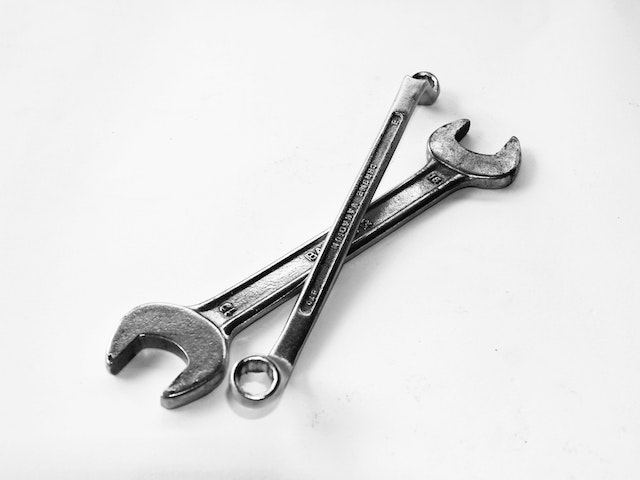Strength training is an important feature to a successful with your Gastric Sleeve. Therefore knowing the basic strength training safety tips is important.
The 5 Strength Training Safety Tips included here are basics, and you may be taking them for granted currently. Yet if your strength training workout is going to deliver the results you desire, you have to be healthy to implement it. That means following these top 5 tips for strength training will help you stay injury-free.
1) Warm Up Before You Get Started, and Cool Down Afterwards
Okay, this is really two tips in one, and you are probably nodding your head and thinking, “I already knew this.”,yet a report from the Harvard Medical School shows that more than half of all non professional strength trainers and weightlifters fail to either warm up before they get started. This this can lead to injuries. You really only need no more than 10 minutes to get your body and mind ready for your workout. Here are a few movements that you may want to add into your warm up routine:
- walking on a treadmill at a moderate incline
- bodyweight squats
- body weight squats rotating your upper body every time you stand up
- Wide stance squat – shift your weight slightly side to side with each squat
- Reverse lunge with an arm reach up
2) Practice Good Form
Don’t think about the weight, think about your form. Always align your body correctly according to the exercise or strength training move you are making. Poor form can not only result in injuries, both immediate and over time, but it can also slow down the delivery of the results you are looking for. Many strength training experts recommend starting with no weight or a very low weight at first until your muscle memory reflex helps you perform each exercise correctly.
It’s even more important if strength training after your gastric sleeve is new to you. There are a few ways to go about making sure you get your form right. Watching a few videos on how to do the movement is a great start, as mentioned above do the movement with little or no weight and do it in front of a full length mirror. And finally get a professional to help you out. Hiring a personal trainer can be expensive but knowing that you are doing the movements correctly pays for itself in less future injury.

Poor form can not only result in injuries, both immediate and over time
3) Stick to an Established Routine
The human brain commits to memory and habit anything you do 17 to 21 times in a row, in the same way, and at roughly the same time each day or night. Pick your strength training days for each week and stick with them. This “second nature” programming means you are less likely to injure yourself. It also helps your body understand when its muscles will be stressed and when they will repair, leading to more consistent results as you increase the weight, sets and reps in your strength training workout over time.
One of the best ways to build that routine is to have a fairly comprehensive fitness program built a head of time. It’s one of the things that a personal trainer can help you with. But if that isn’t in the cards for you then you can build the program on your own. I’ve built a guide you can download that goes through all the steps to build a workout program.
4) Give Your Muscles Time to Repair

Not letting them heal before stressing them again can cause significant short and long-term injuries.
Lots of water and proper nutrition are needed after you workout, and after an intensive strength training session, your muscles also require at least 48 hours to recover properly. When you stress your muscles, you create small tears in your muscle tissue. Not letting them heal before stressing them again can cause significant short and long-term injuries. Also, given proper hydration and nutrition as well as enough downtime, your desired results will start to materialize quicker.
If your strength training after gastric sleeve surgery is new to you giving yourself more rest is very important. If you are brand new then the soreness of the muscle will probably force that rest for you. You may want to add some stretching into you day with the hope that it will help reduce the soreness – but unfortunately there isn’t much evidence that it does much. BUT it’s a great way to help with flexibility so keep it in or put it in your routine.
5) Dress Appropriately
Your clothing should allow for a full range of motion, regardless what exercises or routines your strength training regimen requires. Stay away from restrictive clothing because it can hamper good form.
Safety should be your number one priority in the gym, your garage or wherever you decide to perform your strength training exercises. When handled properly, weightlifting and strength training are some of the safest physical exertion activities you can enjoy. Whenever in doubt, think before acting or performing an exercise, and consult a trained professional if you ever have a question. Follow these 5 Strength Training Safety Tips, and you are sure to enjoy the biggest benefits from your workout, while helping eliminate injuries.
What to read next: Give yourself time – The gastric sleeve and exercise
Subscribe To My Bariatric Journey Newsletter
Each month we take on a new topic around Exercise, Nutrition and Mindset and how it can help you on your weight loss journey. You will also get first notice of upcoming promotions.
Geof has been working with bariatric surgery clients for over a decade. His goal with Coaching For Bariatric Success is to give you the tools to make your weight loss successful for the long term.